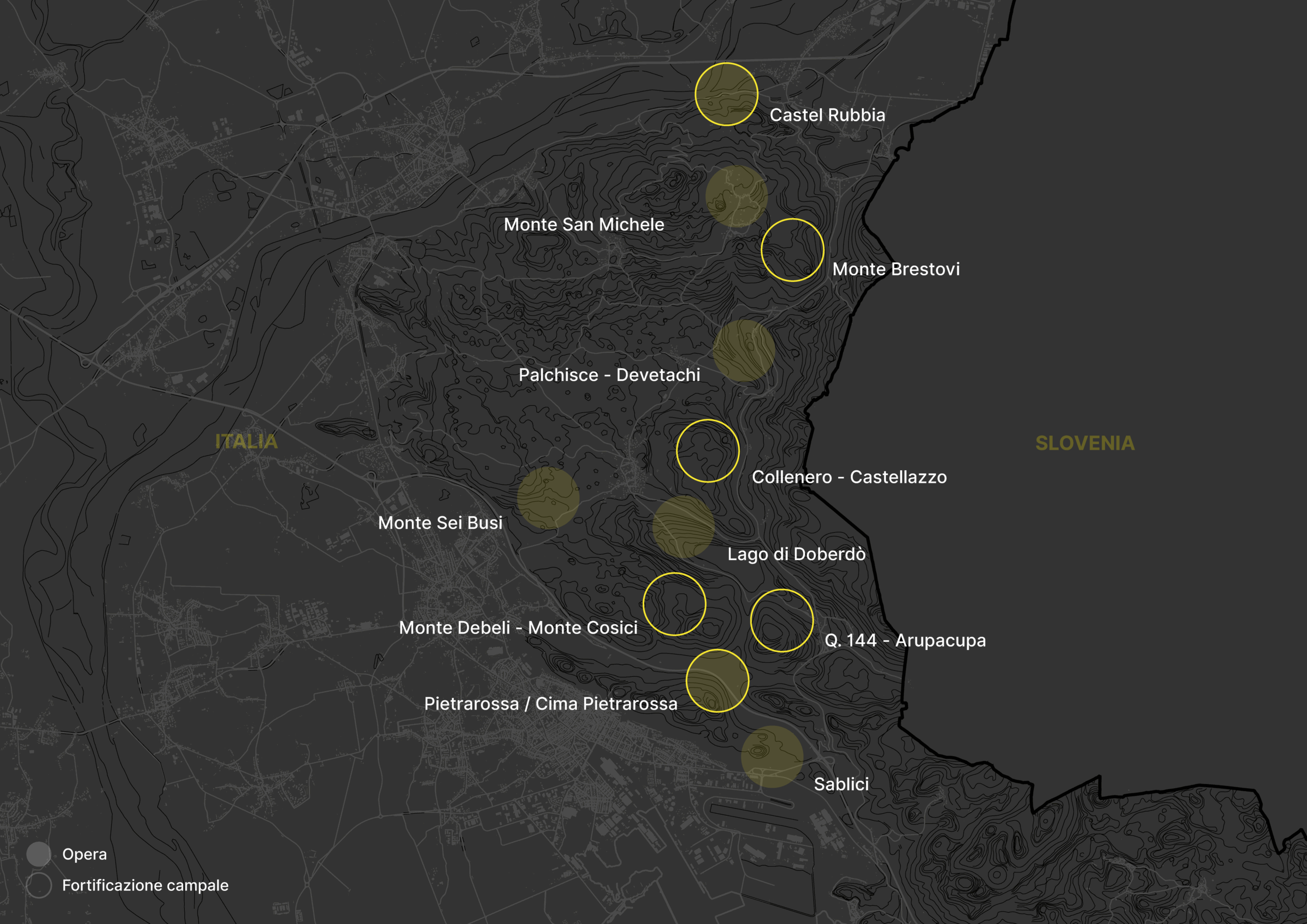around Monfalcone

HISTORICAL BACKGROUND AND COMPOSITION
A whopping 424 fortified structures were built in the 1960s in the Karst area around Monfalcone, which were divided into field and permanent positions. The field positions started to be built in 1962 and featured six strongholds: Castel Rubbia, Mount Brestovi, Collenero – Castellazzo, 144 – Arupacupa, Cima Pietrarossa and Mount Debeli – Mount Cosici.
These strongholds consisted of various types of structures: observatory posts, shelters, command posts, ammunition, food and dressing posts, machine gun, mortar, rocket launcher, submachine gun and recoilless cannon posts. When it comes to permanent fortifications, in 1965 six works started to be built: Sablici, Pietrarossa, Castel Rubbia, Palchisce – Devetachi, Mount Sei Busi and Lake Doberdò. They consisted of an observatory command post, P positions (for anti-tank units) in a battle tank turret (which consisted of a tank turret, removed from American M26 “Pershing” tanks, placed on a concrete base, under which was a shelter), M positions (for machine gun) in a four-slit turret, mortar positions and shelters for infantry squads. In 1968 another work was built on Mount San Michele.
PURPOSE
The purpose of the fortifications in this area was to protect the flanks and block any outflanking manoeuvres of the Gorizia gap, located nearby to the north.
OPENINGS TO THE PUBLIC
The structures can only be accessed from the outside, through five hiking paths of varying difficulty.
CONTACTS
